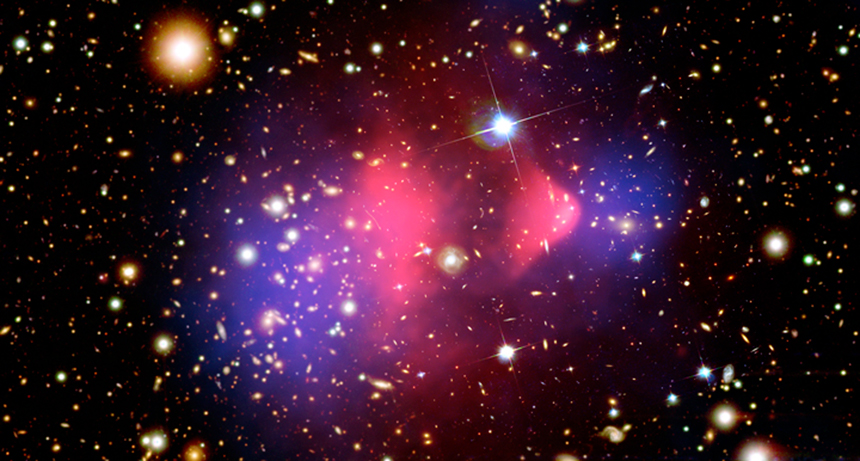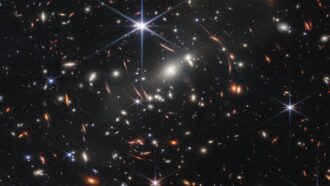Dark collision
Observations of a tremendous galactic crash point to invisible stuff called dark matter.

This combined image from several observatories and telescopes shows where two clusters of galaxies collided 100 million years ago. The ordinary matter, shown in pink, from the two galaxies collided, whereas the dark matter from each galaxy, shown in purple.
Markevitch et al., Clowe et al., Magellan, Univ. of Arizona, CXC, CFA, STScI, ESO WFI, NASA







